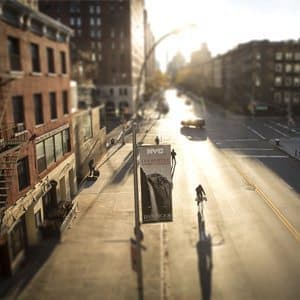Central Harlem is located in northern Manhattan between W. 110th and W. 155th Street, close to our Manhattan personal injury law firm. It is surrounded by Fifth Avenue on the east, Central Park on the South, Morningside Park, St. Nicholas Avenue and Edgecombe Avenue on the west, and the Harlem River on the north.

This neighborhood has a large density of African Americans due to the Great Migration of the early 20th century. Between the 1920s and 1930s, many traveled to Harlem to participate in the literary and artistic movement that is popularly known as the Harlem Renaissance. The Harlem Renaissance was a time when jazz music boomed in many trendy clubs of the day. Harlem was also the center of black political life.
In our 21st century Harlem, the area is quickly being gentrified, so much so that former United States President Bill Clinton opened his office at 55 W. 125th Street Central Harlem.
The Harlem Renaissance brought so many historical figures who made the neighborhood their home. Some of those residents and their claims to fame are:
Some of Central Harlem's main attractions are rich in history, including one of its main areas like the Striver's Row or St. Nicholas Historical District. A closer look at some of these areas reveals the following facts:
This area between 7th and 8th Avenues on 138th and 139th Streets is officially known as the St. Nicholas Historic District. It is also called Striver's Row due to its upwardly mobile residents. The houses in this area were designed by some of America's well-known architects, such as Stanford White.
The homes were meant to be occupied by middle-class black families, but ironically, the wealthier families were fortunate enough to live in this area. Mostly doctors, lawyers, and musicians like Eubie Blake lived in Striver's Row. Today if you want to live in Striver's Row you can expect to pay roughly $1.5- 2 million for a renovated Georgian-Style home.
Mount Morris Park Historic District became a Historic District in 1971 and was declared by the New York City Landmarks Preservation Commission. Morris Park covers 16 blocks from West 118th to West 124th Streets and west from Fifth Avenue to Malcolm X Boulevard (Lenox Avenue).
Besides being declared a historic site, the main attraction of this neighborhood was Mount Morris Square, established in 1839, and later became part of the New York City public park system. In 1973 the park was renamed Marcus Garvey Park in honor of the leader of the international Pan-African movement.
This building found at 267 W. 136th Street, was changed to be a rent-free housing area for artists by Iolanthe Sydney. Numerous artists have spent some time here including, the aforementioned Zora Neale Hurston and Langston Hughes. 267 House garnered a reputation for being the center for a young generation of artists and writers.
Getting to Central Harlem is easy if you use subway trains A, B, or C to Cathedral Parkway, 116th, 125th, 135th, 145th or 155th Streets. You can also get there using the D train to 125th, 145th, or 155th Streets. Or you can use the 2 or 3 trains to Central Park North, 116th, 125th or 135th Street and the 3 train to 145th Street or 148th Street.
For the bus users, you can take bus service lines to Harlem that include the M2, M3, M4, M7, M10, M18, M100, M101, M116, Bx15, Bx19, and Bx33.
In case of an emergency, contact the following Central Harlem police and hospital departments.
2271-89 8th Ave., New York, NY, 10027-5319
(212) 678-1611
506 Lenox Avenue
at 135th Street; Herbert Cave Auditorium
New York, NY 10037
(212) 939-1000
Also visit: